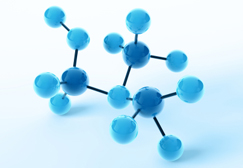Lactate
Lactate can be measured in both Clinical Research and Industrial, Commercial & Biotechnology applications
Please see examples below.
Clinical & Research
Lactate can be measured in Clinical Pathology, Sports Science and Exercise Physiology.
Industry & Biotechnology
Lactate can be measured in biotechnology, pharmaceutical and food & beverage applications.
Clinical & Research
A rapid high performance analysis for lactate in whole blood, plasma or serum, based on the direct reaction with Lactate Oxidase (LOD).
Principle
In the presence of molecular oxygen, lactate is oxidised by the enzyme Lactate Oxidase to pyruvate and hydrogen peroxide:

Under the conditions of the assay, oxygen consumption is directly proportional to the L-lactate concentration
Technical Summary
| Samples | Intact whole-blood and lysed whole-blood (collected in Analox tubes or capillaries), plasma, neutralised perchloric acid extracts and other aqueous media. |
| Sample Volume | 5 µl or 7µl |
| Analysis Time | 20 seconds |
| Linearity | 0 -10 mmol/L, (0 - 90mg/dl) - 7 µl sample 0- 14 mmol/L, (0 - 126 mg/dl) - 5 µl sample |
| Precision | C.V. of 2% @ 2.5 mmol/L |
| Detection Limit | 0.3mmol/L @7 µl sample: 0.1mmol/L @ 25 µl sample |
| Reagent Stability | Shelf-life unopened: 12 months stored at 0-5°C. Shelf-life reconstituted: 60 days stored at 0-5°C. |
Notes:
Quality Control Serum and sample record cards for attachment and identification of capillaries are available.
Lactate methodology has excellent precision at all levels, stable calibration, and is remarkably free from interferences.
Alternative standards at 3.0 and 5.0 mmol/L, and a quality control material, are available in addition to the kit calibrant of 8.0 mmol/L (72.1 mg/dl).
Technical Bulletins
Industry & Biotechnology
A rapid high performance analysis based on the direct reaction with the specific enzyme L-Lactate Oxidase (LOD).
Principle
In the presence of molecular oxygen, lactate is oxidised by the enzyme lactate oxidase to pyruvate and hydrogen peroxide:

Under the conditions of the assay, oxygen consumption is directly proportional to the L-lactate concentration:
Technical Summary
| Samples | Aqueous or semi-aqueous samples such as dairy products, e.g. milk, can be used directly. |
| Sample Volume | 5µl |
| Analysis Time | 20 seconds |
| Analytical Range | 0.006 - 14 mmol/L (ca. 0.5 - 126 mg/dl) |
| Precision | Typical within-run C.V. 2 % @ 2.5 mmol/L |
| Reagent Stability | Shelf-life unopened: 12 months stored at 0-5°C. Shelf-life reconstituted: 60 days stored at 0-5°C. |
Notes:
Turbidity or opacity is not a problem as the detection method is electrochemical rather than optical.
Specimens should be in the pH range 4-8 and free from overt bacterial contamination.
Lactate methodology has excellent precision at all levels, stable calibration, and is remarkably free from interferences.
Alternative standards at 3.0 and 5.0 mmol/L, and a quality control material, are available in addition to the kit calibrant of 8.0 mmol/L (72.1 mg/dl).
The enzyme lactate oxidase is 100 % specific to L-Lactate. D-lactate is not measured.


